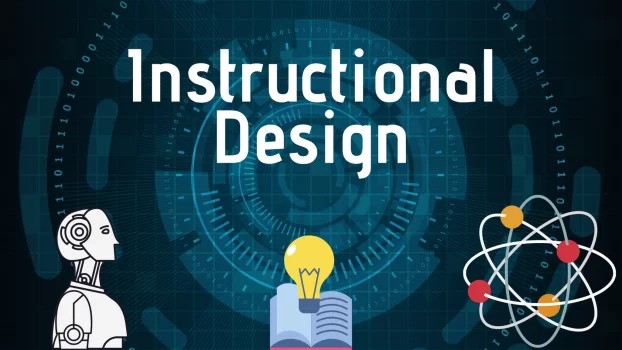Who do you think is responsible for your online learning experience, whether it be a course or a video? It could be a different coach from the one you see on the screen. A lot of the onus for creating a course falls on the shoulders of the instructional designer.
Read this comprehensive guide to learn everything you need to know to make professional Instructional design Careers.
For Instructional design Careers, if you are genuinely interested in facilitating the learning of others, then you must first prioritise your professional development. In contrast to professions like medicine and law, where a certain degree is required, becoming an instructional designer can be accomplished in various ways. However, most employers prefer to hire those with an Instructional design certificate.
Who Is an Instructional Designer, and What Do They Do?
Your non-eLearning-savvy acquaintances may be curious about your job as an instructional designer. You can respond as follows: An instructional designer is a specialist in electronic learning who consults with experts in their field and applies relevant ideas and models to their work to develop courses that students will find interesting and valuable.
Do you know what it’s like to work as an Instructional Design?
Online courses, seminars, instruction manuals, workshops, tutorials, multimedia training modules, and exams are some educational content types that instructional designers plan, develop, and improve. Instruction manuals for consumer goods to company management curricula and technical training use their expertise. The Role of the Instructional Designer
- Creating, modifying, and assessing many forms of educational content.
- Methodically determining what students need to learn and creating materials to help them succeed.
- Working with interested parties (both internal and external) to identify requirements for the design.
- Developing and executing a training plan.
- Training that includes testing, evaluation, feedback, and assistance for students.
- Researching various educational methods, techniques, and materials.
- Performing user research.
Instructional Design Careers: Is It Worth It to Become One?
For instructional designers, job satisfaction, salary, and work-life balance are above average. If the career path described in this article appeals to you and you are confident in acquiring the necessary abilities, consider seriously enrolling in Instructional design courses.
You will find more evidence that instructional design careers are a bright field below.
- The compensation for an instructional designer in the United States is $77,360, while the income for an independent instructional designer is $104,228.
- In many cases, experts predict double-digit annual job growth.
- Due to its high job satisfaction and favourable work-life balance, “instructional designer” frequently appears on “top jobs” lists.
Qualifications Needed for Instructional Design Careers
Here are a few abilities that can help you succeed in the field of instructional design:
- Instructional designers use their imagination to develop fresh ways of delivering information to students. Adding aesthetic appeal and interactivity to content has been shown to boost participation and productivity.
- Keeping up with industry developments and incorporating them into innovative educational solutions calls for the ability to conduct thorough research. Instructional designers use these abilities to verify the integrity of course materials.
- Effective time management is essential for instructional designers juggling multiple projects simultaneously. Practical time management abilities are required for on-time project completion.
- Effective communication between the instructional designer and the target audience is crucial for meeting the course goals. The ability to effectively convey information in writing is another essential talent for instructional designers.
Instructional Design Careers: How to Get Started
Follow these guidelines for successful instructional designer careers:
1. Acquire Knowledge, Method, and Practise
To make it as an instructional designer, you must take Instructional design classes to study the relevant ideas and frameworks. Instructional designers base their judgements on theories like Merril’s, ADDIE’s, Gagne’s, and Bloom’s Taxonomy. To apply this information to your designs, you must also comprehend the hows and whys of human learning. Situated cognition theory, inquiry-based education, and discovery-based education are all examples of these pedagogical approaches.
In addition, many companies prefer hiring specialists with an Instructional design certificate before hiring an entry-level employee. To broaden your employment prospects, you could also get a master’s or PhD in instructional design courses. If you want to learn more about these strategies and ideas, read articles or books, listen to podcasts, or enrol in Instructional design training.
- ADDIE Model
You should learn more about the ADDIE model if you are new to the field of instructional design. The ADDIE model is a comprehensive framework for the creation of educational materials.
As an acronym, ADDIE refers to the phases of a project’s life cycle: planning, research, creativity, creation, and assessment.
- Gagne’s Nine Events of Instruction
Every instructional intervention needs to consider Gagne’s nine instruction events. If you are new to the field, these occurrences can be a helpful guide while developing training.
Although Robert Gagne published this in 1965, its foundational principles remain sound. Many pedagogical strategies and e-learning frameworks are designed with Gagne’s nine events in mind.
- Action Mapping
Cathy Moore created the action mapping technique as a performance consulting strategy for designing practical training. Many Fortune 500 utilise it because it is adaptable to the current business climate.
For example, many businesses devote significant resources to mass-producing training courses that rarely meet business or performance requirements. As such, they are a waste of resources that could have been better allocated elsewhere in the firm.
It recommends pinpointing a specific company objective, figuring out the most important things workers need to do to reach that objective, and then creating interventions to ensure those workers do those things.
Instructional design teams are more likely to take their work seriously if they have a specific commercial objective. It is particularly significant when Instructional design courses in Bangalore are intended to boost productivity in business contexts.
The action map is another crucial component of Cathy Moore’s method. It helps you maintain an eye on what workers need to know to do their jobs rather than just what managers and specialists think they need to know.
Behaviourism
Behaviourism is a school of thought in psychology that primarily emphasises overt, observable actions. It also delves into the finer points of how reinforcement and punishment can shape behaviour.
When designing lessons, operant conditioning is the critical behaviourist principle. According to proponents of this education method, rewarding and punishing good behaviour can raise the frequency of the former and decrease the latter.
There is a great deal more nuance involved, such as with reinforcement schedules, and the nature of rewards and punishments used can have a significant bearing on the success of an intervention.
The psychological foundations of many performance treatments may be traced back to behaviourism. Therefore familiarising yourself with this theory is worthwhile despite its complexity.
Compensation, kudos, badges, completion certificates, and other forms of modern recognition are all based on behaviourist concepts.
Cognitive Information Processing
The psychology literature also includes the theory of cognitive information processing. It compares human cognitive processes to computer ones and says you must examine them to understand human behaviour.
Mayer’s Multimedia Learning Principles
Richard Mayer outlines 12 guidelines for creating effective multimedia learning environments, all based on solid research. If you plan to build or develop eLearning, you should have a firm understanding of these concepts; failure to do so can result in a confusing and ineffective learning experience.
2. Master the Appropriate Programmes and Technology
Many entry-level instructional design positions call for familiarity with standard e-learning design technologies. The best instructional design course can teach you how to use these programmes more effectively. Practise with commonly-used programmes so you can become proficient with them.
3. Improve your Fundamental Abilities
The client may ask Instructional designers to do more than only investigate new initiatives, develop courses and curricula, and conduct interviews with subject matter experts. Creating the right abilities is crucial for reaching one’s maximum potential. Solid communication and technical writing abilities are critical for getting one’s point through to an audience. Project management with team members and subject matter experts is another important ability for instructional designers.
The role of instructional designer also requires the following skills:
- Video production
- Graphic design
- Programming
4. Make a Portfolio
Experience and proficiency are two of the most sought-after qualities by employers. Internships and volunteer work are great ways to get hands-on experience in your field. Create a collection of your work in educational materials design.
If you want to impress potential employers with your work, you should create a website. You might also give a link to your profile on a professional networking site that highlights your work and accomplishments.
5. Post Your Resumes
If you want Instructional design Careers, apply for instructional design positions once you have the necessary expertise and training. Making an in-depth CV and practising interview skills will help you prepare for job interviews. Skills in technology, curriculum development, and problem-solving should all be prominent on your resume.
You can prepare for an interview by practising your answers to common questions, such as why you want to work in this industry, what relevant experience you have, and what you can add to the company.
Ways to Gain Work Experience For Instructional Design Careers
During the interview process, your professional background can be a deciding element. You may still get the job without it, but your compensation would suffer. What steps may you take to gain experience in curriculum design? At least three methods exist for this:
Academic Assignments
Earning an Instructional design certificate opens several doors for prospective professionals. Your final project will likely be an online course, and you’ll participate in various eLearning projects for other organisations.
Volunteering
You can help with an eLearning project at your company, even if you’re outside the training department. Making a course about a subject you’re already familiar with is a terrific approach to determining if the instructional design fits you.
Consulting and Networking
Locate similar instructional designers and start following them on LinkedIn. Occasionally, they may announce open positions on their website. Alternatively, you may provide your consulting services to an eLearning initiative. In addition, start networking immediately because it is an essential element of the eLearning field.
Are Instructional Design Careers Best For You?
If this is your first exposure to the field of instructional design, you may be wondering whether or not it’s right for you.
When you work in instructional design, you never stop studying. You’re immersing yourself in the knowledge of a guru on a topic, mastering cutting-edge technology, or exploring fascinating new fields.
You put your expertise to use by creating stimulating educational opportunities for others, enhancing their ability to do their jobs (or acquire new skills) successfully.
If you enjoy writing, tinkering with technology, interacting with people, and facilitating their education, instructional design is a fantastic fit for you.
In many cases, instructional designers are paid well, have flexible schedules, and enjoy a pleasant work atmosphere. If you’re looking for a career that pays well and doesn’t interfere with your personal life, Instructional Design could be perfect.
The current status of corporate L&D, however, makes it challenging to make a meaningful difference in the lives of your target audience. Many learning projects are a waste of time and money because they were commissioned by a management or executive who did not assess whether or not training would help solve the problem.
As a result, the target audience rushes through the material to “get it over with.” Therefore, you should be more selective while seeking the proper instructional design job if you want to make a meaningful difference and witness the influence of your work.
What Do Hiring Managers Want to See in Instructional Designers?
Employers in the business world seek instructional designers who are effective communicators, can effectively use instructional design theory, and can create engaging eLearning using rapid authoring technologies.
With so many people currently seeking Instructional design Careers, it will need more than just relevant work experience and a well-written CV to stand out from the crowd.
To be competitive for most instructional design jobs today, however, you must demonstrate to hiring managers that you can use the relevant technology and apply adult learning concepts to develop compelling learning experiences.
Earnings of an Educational Designer
In the United States, an instructional designer can expect to earn a median annual salary of $68,038. Earning potential is influenced by location, level of expertise, and the company one works for. For instance, a highly seasoned instructional designer may command a higher salary than a junior designer. Benefits like health insurance, vacation time, tuition reimbursement, and 401(k) plans are often provided to instructional designers by their companies.
Finale Takeaway
For an instructional designer career, that summarises all the fundamental tools you need to know. Don’t panic if this all seems too much. You can probably be hired or land a contract if you know only Storyline and Illustrator, but you should make a concerted effort to master the rest of these programs. A wide range of skills will make you valuable to organisations and training departments worldwide as you adapt to new technologies.
Henry Harvin Institute is one of India’s leading providers of numerous types of skills. It has received recognition from several well-recognized organisations and is renowned for enhancing vocational skills and imparting practical knowledge. They will provide hands-on training and develop your necessary technical skills.
Henry Harvin’s Instructional Design Course is ranked among India’s top three Instructional Design Courses. By Training 360, Henry Harvin is one of the finest online instructional design courses. It provides you with explicit, in-depth knowledge of Instructional Design that will enable you to create engaging training curriculums. Here, you will receive individualised feedback and support from ID specialists even after the instruction period has concluded.
You can access an LMS portal with video recordings and address all your technical questions. Henry Harvin Education was affiliated with the American Association of EFL, UKAF, content writing Association in India, MSME, and the government of India, among others. The curriculum for the Instructional Design Course consists of seven modules plus two complement modules.




